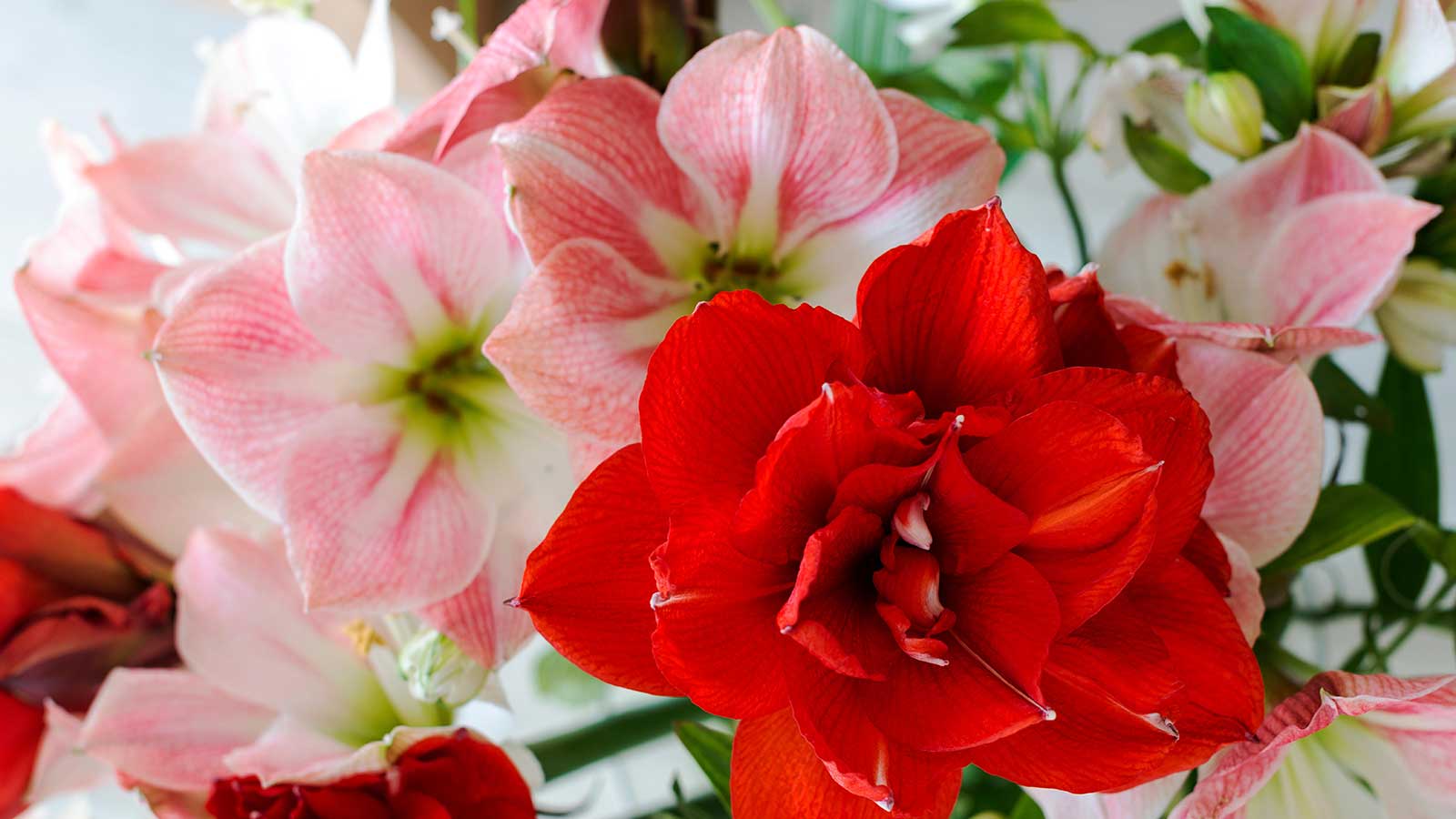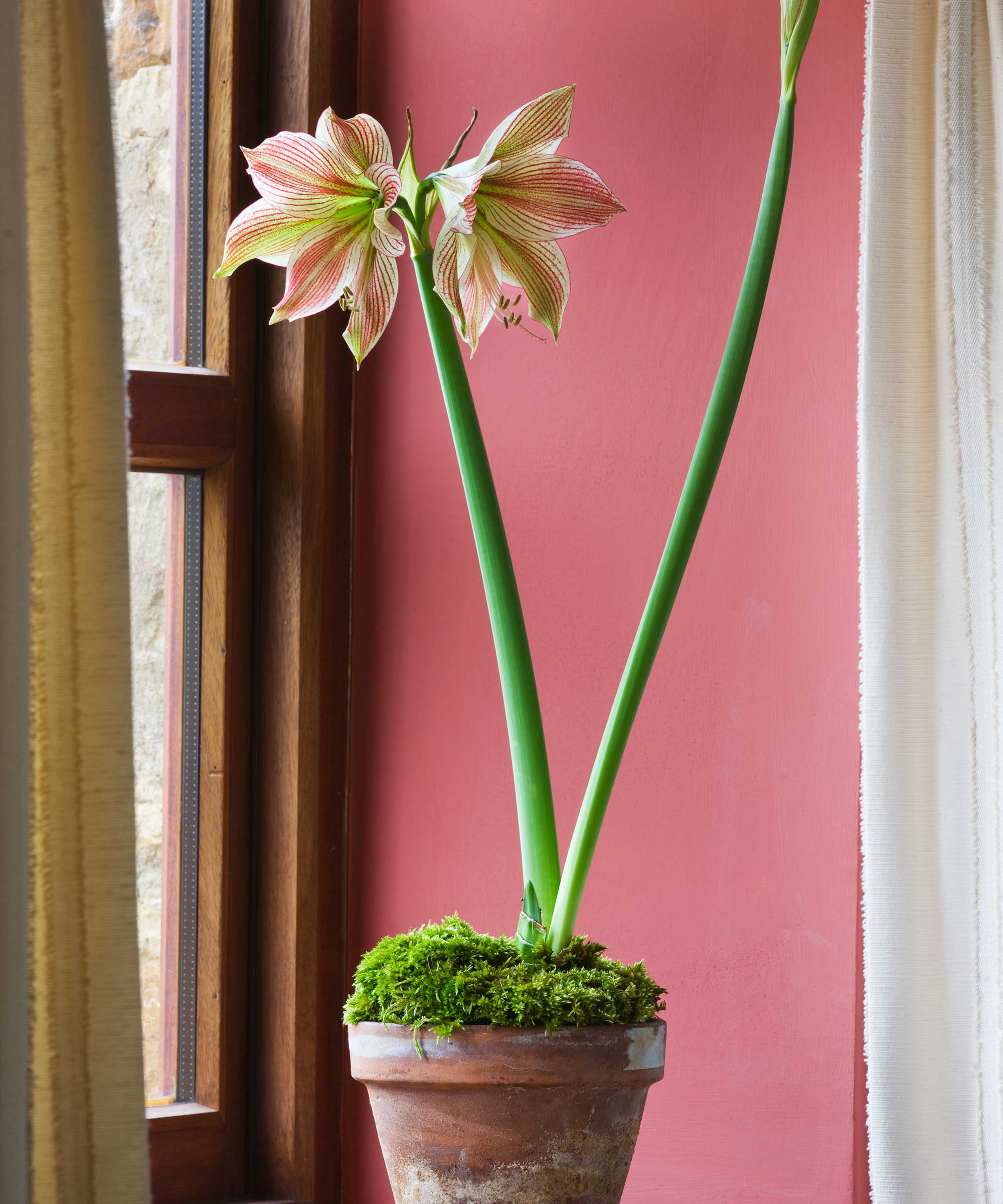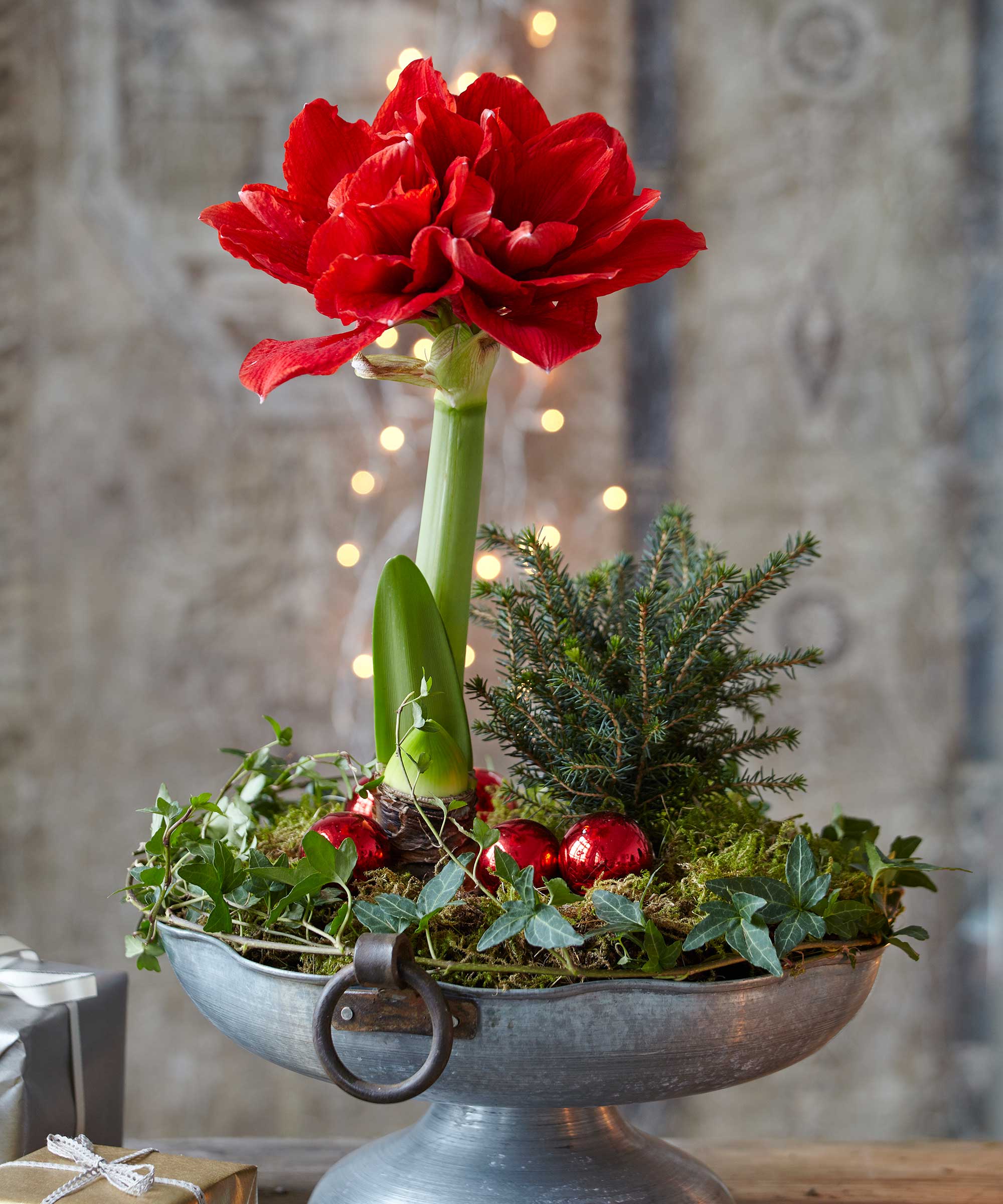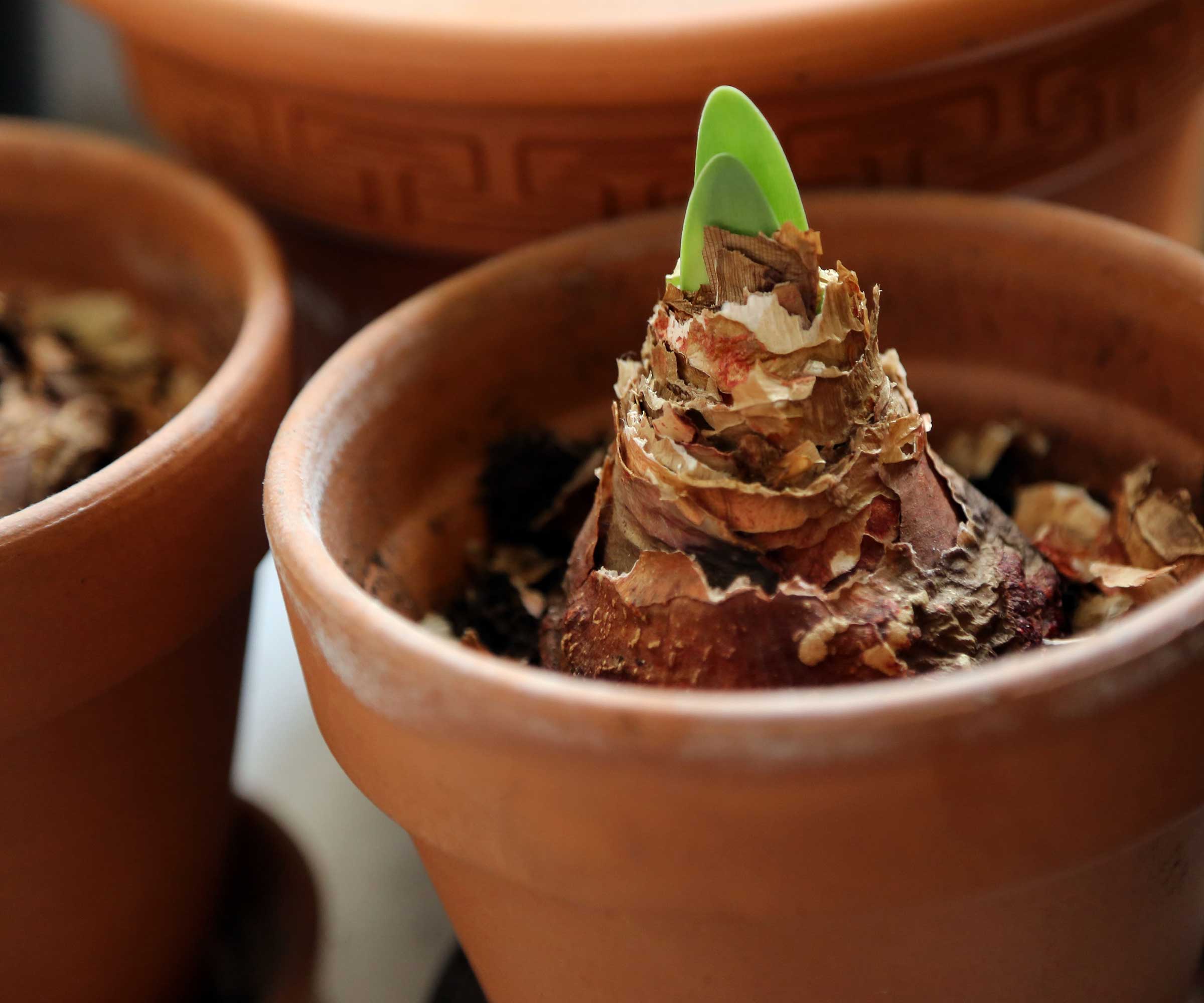What do you do with an amaryllis after it blooms? Don't discard it – follow these tips instead
With the right care, you'll be rewarded with more fabulous flowers the following year


Amaryllis is a wonderful bulb that brightens up homes through late winter and early spring. But once its display is over, there's no need to put it out with the trash. So what do you do with an amaryllis after it blooms?
With the right steps, these show-stopping Christmas plants with their trumpet-shaped blooms in red, pink, white, and even yellow, can grace your interior scheme again next year. To do so, they need watering, feeding, and sunshine during their growing phase, which continues all spring and summer. This will power up the bulbs ready for a second round of flowers (or a third or fourth – amaryllis can last for years).
This growing phase is followed by a 'dormant' period, similar to growing a Christmas cactus, which will force a new flush of blooms. It sounds complicated, but it's not too tricky once you know what to do: our guide explains.

Amaryllis are a favorite for brightening corners of the home in winter
When do amaryllis flower?
Amaryllis are native to central and southern America, where summers are long, hot and dry. In similar temperatures, they should naturally go dormant in summer – with their leaves dying back – before re-blooming in winter. This makes them one of the best bulbs for Christmas flowering.
However, in more temperate conditions, it is quite usual for the bulbs to keep growing throughout the year, explains the Amateur Gardening magazine experts. This is not harmful to the plants if they have water and nutrients available and it doesn’t seem to affect their ability to flower – but it can make the timing unpredictable. Forcing a dormant period can encourage a more reliable winter display.

These plants make the perfect Christmas centerpiece
4 steps to help your amaryllis flower again the following year

John has been a garden journalist for over 50 years and regularly answers readers' questions in Amateur Gardening magazine, including many about amaryllis care. He has also written four books and has delivered many talks over the years on horticulture.
Enjoy these bold and beautiful flowers year after year with this simple guide on what to do with an amaryllis once it's finished blooming:
- Cut back the spent flower stalk using a clean and sharp pair of secateurs or scissors.
- Keep the compost moist. It will also benefit from fortnightly liquid feeding with a tomato fertilizer (available on Amazon) while the leaves are growing, says John Negus, an expert from Amateur Gardening. Keep it somewhere warm and sunny. When risks of frosts have passed, you can move the plant outdoors, hardening it off first.
- Once the leaves have started to go yellow in summer, stop watering and feeding the plant and put it somewhere cool, says John. If the leaves don't go yellow and die back naturally, you can force this dormant period yourself by withholding water and fertilizer in fall. If you continue to water, accept that the flowering season may go astray.
- After 8-10 weeks, top-dress the pots with compost (or, if necessary, repot the bulb – see below). Restart your usual care routine of watering and feeding, and return the pot to a sunny, warm location. New growth will begin, and before long, you'll be able to enjoy these indoor flowering plants again in their full glory.

Start watering and feeding the bulbs again after their dormancy period
How often should you repot an amaryllis?
Amaryllis often flower better when pot-bound and shouldn’t be repotted every year, says John Negus, an expert from Amateur Gardening. 'There should be a 2in gap between the pot and the bulb.'
However, if yours has outgrown its pot, you can tap the bulb from its container once the leaves have died back, and reset it in a larger pot in ericaceous, loam-based compost with a handful of grit to improve drainage.
Ideally, soak the compost before planting, squeezing out as much water as possible, and set the bulb to half its depth, John says. 'Do not water again until new leaves appear.'
This Christmas, my amaryllis flowered well but didn’t produce leaves. Does this mean the bulb will be too weak to bloom again?
'Don’t worry,' reassures John Negus, an expert from Amateur Gardening. 'Your plant will have used up energy flowering without leaves, but this is not unusual and the leaves will soon appear and start to replenish the bulbs ready for next year.
'Once you have removed the flower stems, top-dress the pots with fresh compost, which should encourage some strong leaves to develop. Keep watering the compost, but not too much, bearing in mind there are not yet any leaves to draw the water into the plant.'
Sign up to the Homes & Gardens newsletter
Design expertise in your inbox – from inspiring decorating ideas and beautiful celebrity homes to practical gardening advice and shopping round-ups.

Holly started writing about gardening five years ago, and she is a regular contributor to Homes & Gardens. She has also written many gardening features for Woman & Home and Real Homes, too. She has previous experience as a professional gardener, where she helped to plant and maintain private gardens. Holly has also looked after allotment plots over the years and loves to grow her own flowers and veggies from seed. In her spare time, she enjoys visiting local gardens, botanical drawing, and tending to her ever-growing collection of houseplants.
-
 Bethenny Frankel says this affordable but 'expensive-looking' silverware set is the perfect stand-in for an iconic $2,050 version – recreate the look for under $60
Bethenny Frankel says this affordable but 'expensive-looking' silverware set is the perfect stand-in for an iconic $2,050 version – recreate the look for under $60Store your flatware in style with the RHONY's flashy (but affordable) egg-shaped flatware recommendation – and get the look no matter your budget
By Sophie Edwards
-
 Easily harness the decluttering power of the Category Consolidation Approach – if you constantly try and fail to 'eat the elephant whole', experts say this one's for you
Easily harness the decluttering power of the Category Consolidation Approach – if you constantly try and fail to 'eat the elephant whole', experts say this one's for youTake the stress out of streamlining with this tried-and-tested method that home organizing pros love
By Andy van Terheyden